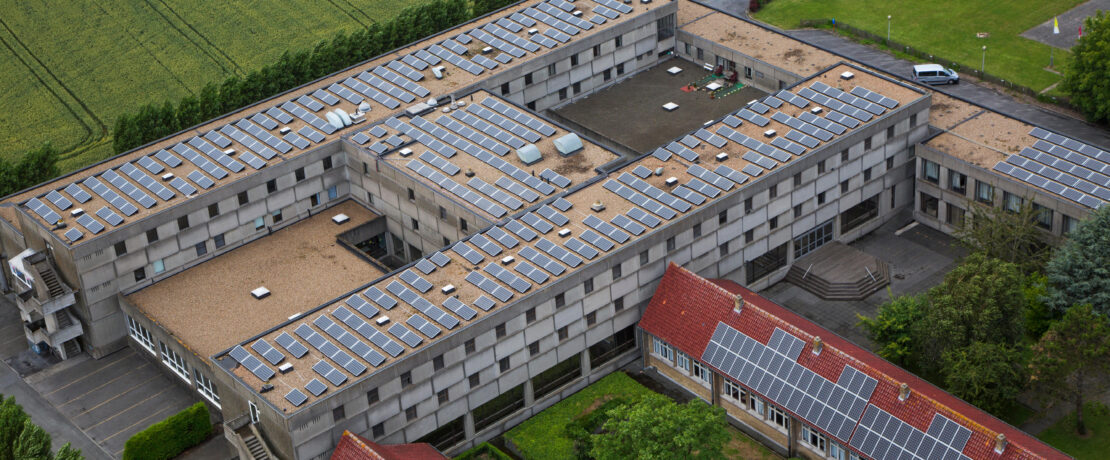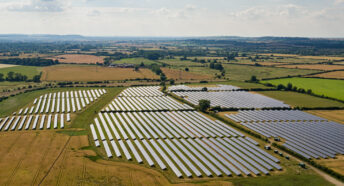A rooftop revolution: turning possibility into reality
Putting solar panels on rooftops across the country can help us to generate the clean electricity we need, while cutting our carbon emissions and sparing land for food, farming and nature. But how much solar energy do we need, and how do we unleash a rooftop revolution that is good for people and the planet?
What does the government say?
The Climate Change Committee (CCC) is an independent group of experts who advise the government on how to reduce our carbon emissions. It recommends that 54GW of solar capacity is needed by 2035. Indeed, the UK government has now set an even more ambitious target of 70 GW of solar energy by 2035. CPRE supports the wind and solar targets, but our support depends on four criteria: energy efficiency, minimising impacts on the countryside, community involvement and ethical sourcing. Currently the government, the planning system and the solar industry are all falling short against those criteria.
The potential of rooftop solar
Both for new buildings and for retrofits, we support a ‘fabric first’ approach. This approach focuses on minimising energy use before turning to renewable energy generation. However, solar is a great option for fitting to the roofs of existing buildings, especially industrial and commercial properties like supermarkets and warehouses. In fact, the government estimates there are 250,000 hectares of south-facing, industrial roof space across the country. That’s an area bigger than London and Manchester combined, with the potential for a vast amount of solar panels.
We know that not all of these roofs will be available for solar panels. But, even a very conservative estimate suggests that this commercial roof space could provide an area big enough to generate approximately 25 GW of energy. This amounts to nearly half the total amount recommended by the Climate Change Committee (CCC).
Turning car parks into power stations
Then there are car parks. Covering land with tarmac and storing cars on it has no place in 21st century land-use policies. Sure, cars need to be parked, but if we put homes above them and a mix of solar and green roofs on top, the win-win scenarios for housing, sustainability and nature are vast. Edge-of-town commercial land is particularly ripe for transformation.
With good planning and design, the 20,000 hectares of car parking space across the country could potentially yield an additional 8GW of solar capacity alongside tens of thousands of new homes. Taken together, our commercial rooftops and those over car parks could provide more electricity than 10 nuclear power stations the size of Sizewell C!
Of course, many roofs or car parks will not be well-located for what’s called ‘utility’ solar (generating capacity that’s feeds into the National Grid, rather than being consumed on-site in the home or factory). But that’s not really a problem because, with smart metering and the right feed-in tariffs, homes and factories can sell electricity to their neighbours.
What is CPRE doing?
We’re running a campaign to urge the government to fully realise the potential of solar on rooftops and other ‘grey’ spaces. From warehouses to schools, car parks and farm buildings, we can quickly roll out renewable energy without harming wildlife, food security and landscapes.
We have published research by the UCL Energy Institute into the true potential for meeting our energy needs if we made full use of the rooftop space available for solar panels across the country. The research shows that installing solar panels on existing buildings and car parks would enjoy near-universal public support and help minimise objections to large solar farms in the countryside, Find out more about our rooftop renewable campaign.
As a society, we also need to address issues of supply chains and modern slavery. Although these issues in themselves are beyond CPRE’s remit, they are nonetheless critical concerns that need urgent and decisive action if we are to scale up the use of solar power. We support calls for reform made in a recent report by the University of Nottingham.
What we want to see
As part of our campaign, we are calling on the government to unleash a rooftop revolution by urgently taking these steps:
- Managing the potential impacts of solar energy schemes on the countryside by developing a “land-use framework” that addresses the competing demands on our finite land.
- Implementing roof-first planning policies that prioritise opportunities for generating solar energy from areas that are already built on, while avoiding land that is being viably and sustainably farmed.
- Changing regulations so that rooftop solar on, and with, suitably oriented roofs is a standard requirement for new buildings, including homes.
- Introducing co-ordinated industrial policies and a road map to make solar energy supply chains slavery-free as soon as possible.
- Providing more financial support like government backed low-cost loans for homeowners, small businesses and community groups.
- Making that there is investment in our electrical grid so that rooftop solar projects can get connected quickly and affordably.
- Empowering rural communities to set out where and how new renewable energy schemes can be incorporated in the countryside by building upon the examples of both Kendall Town Council audit of rooftop solar and the Community Energy Visioning process, pioneered by CPRE and the Centre for Sustainable Energy.
What you can do
-
- Sign our petition to unleash the potential of rooftop solar.
- Sign up to our monthly newsletter to keep up to date with our campaign. We have big plans for pushing political parties to do more to promote rooftop solar and over the coming months there will be lots of opportunities to get involved and add your voice to the campaign.
- Share our rooftop renewable content with your friends and family. We need to massively increase the awareness of the potential of rooftop solar to contribute towards our energy needs and reduce pressures on our countryside. The more people you can encourage to read this article, the stronger our campaign will be.
- Find your local CPRE group and get involved with any campaigns that are running in your local countryside.
- Donate to CPRE. Rallying the public in support of rooftop solar and encouraging politicians to do more to ensure we are making the most efficient use of our land by generating electricity from roofs while sparing space for nature will be expensive and time consuming. Last year, our people powered campaigns stopped the return of fracking and persuaded the government to restore our iconic hedgerows. With your donation we can deliver the strongest possible campaign to get the government to deliver solar panels on rooftops across the country.





